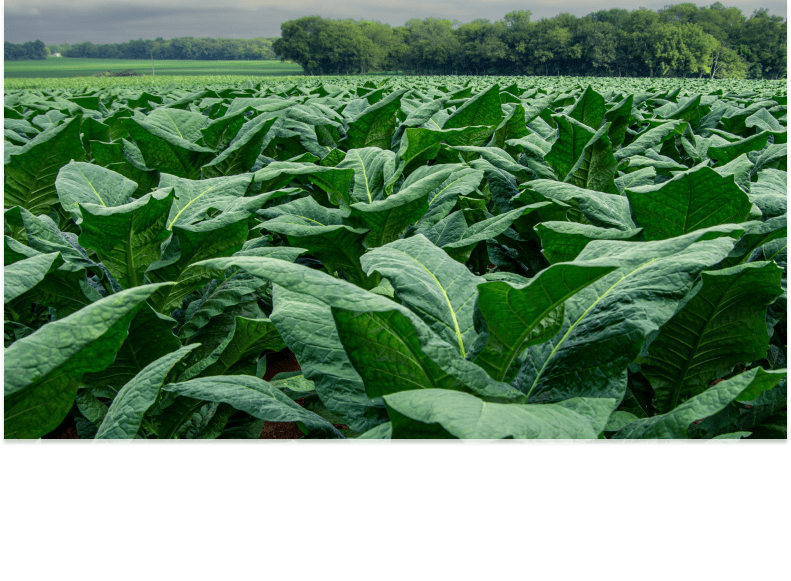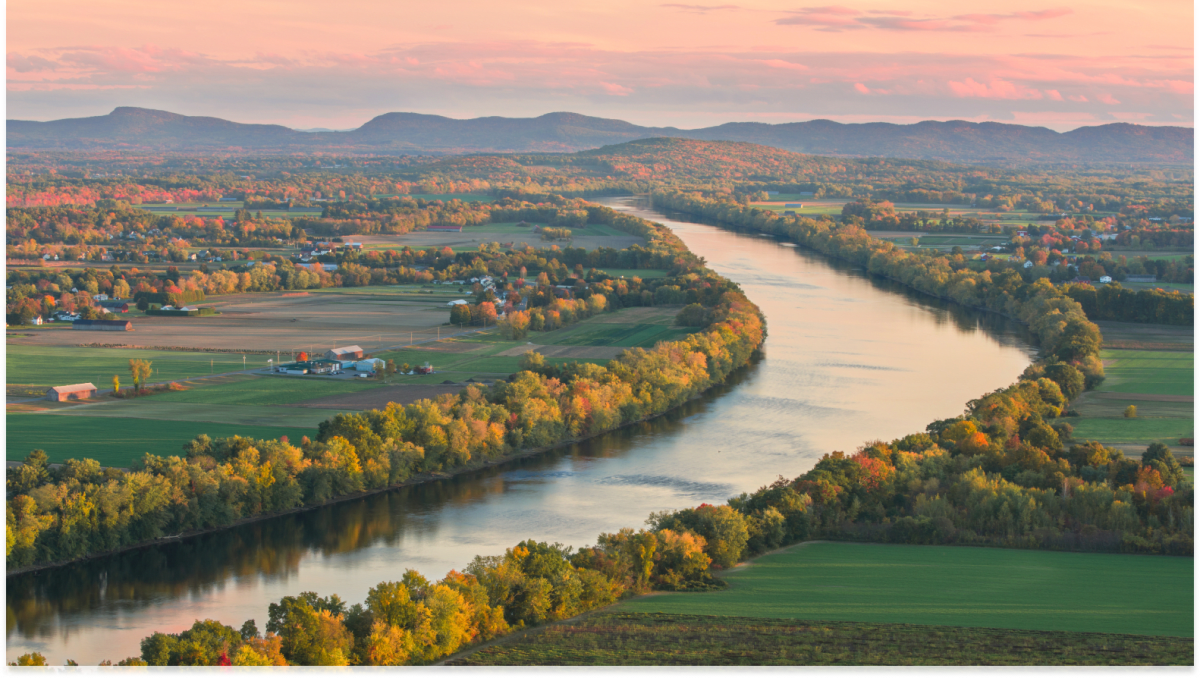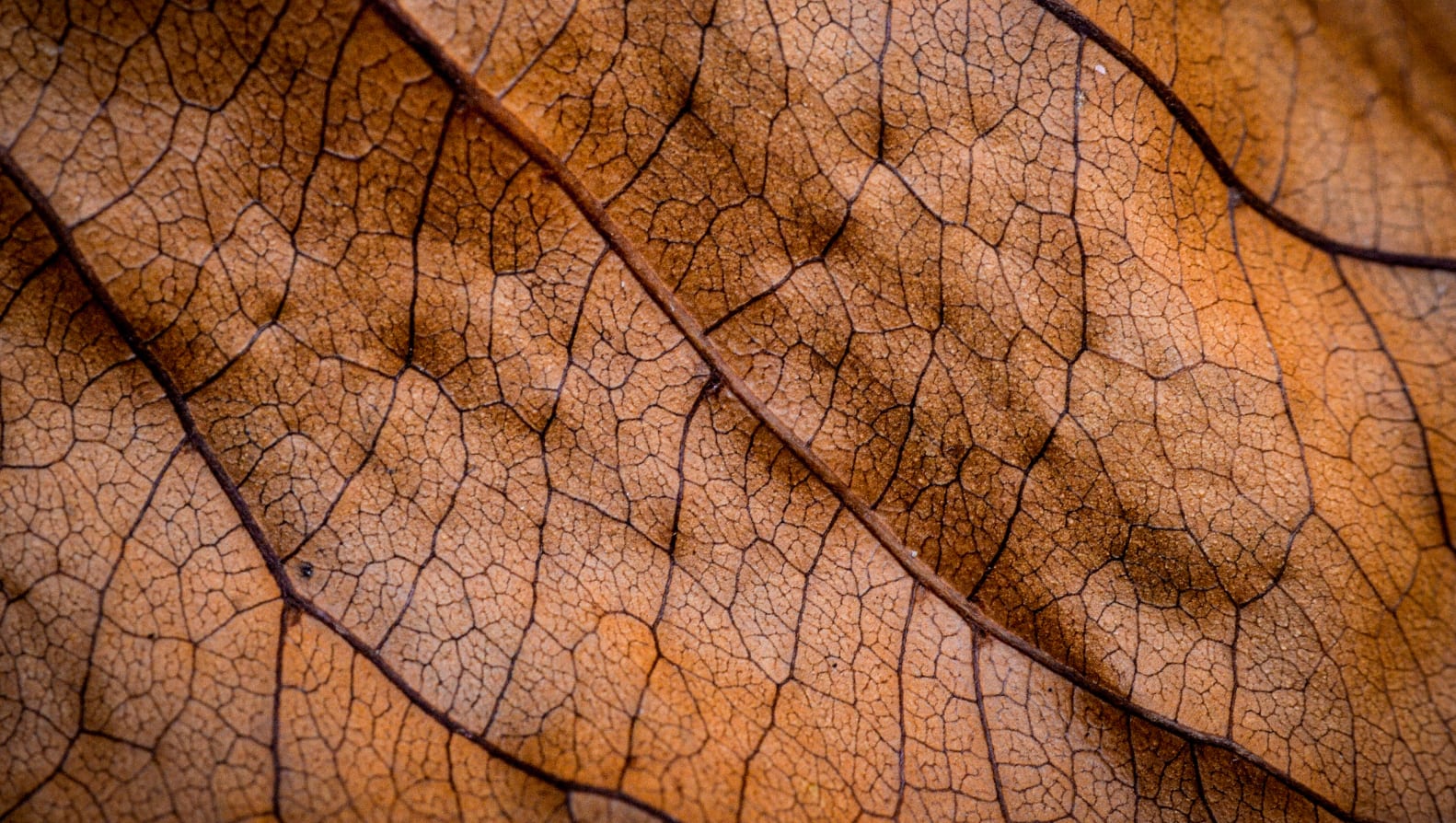
OUTPOST FIELD NOTES: connecticut

Connecticut Tobacco and Its Lasting Impact
As we dive deeper into our quest to share our tobacco knowledge, we’ve got to cover one of North America’s most famous tobacco-growing regions: The Connecticut River Valley.
More than just a cool topic for cigars, the Connecticut River Valley has been a near-perfect spot to grow tobacco and other crops for hundreds of years. The agriculture of this region has left a mark, not only on the cigar industry, but on American history as a whole.

Tobacco paradise
For anyone even remotely knowledgeable on United States geography, you probably know where Connecticut is. But the Connecticut River Valley we’re talking about isn’t confined by state lines. The Connecticut River is the longest river in New England and originates just south of the United States and Canadian border. It runs for over 400 miles, traveling through Vermont, New Hampshire, Massachusetts and finally, Connecticut, before emptying into Long Island Sound.For anyone even remotely knowledgeable on United States geography, you probably know where Connecticut is. But the Connecticut River Valley we’re talking about isn’t confined by state lines. The Connecticut River is the longest river in New England and originates just south of the United States and Canadian border. It runs for over 400 miles, traveling through Vermont, New Hampshire, Massachusetts and finally, Connecticut, before emptying into Long Island Sound.
The river itself makes this area incredibly fertile, depositing high levels of organic matter in the soil that already has a notably low pH. When combined with the area’s famed humid climate and mild winters, the ideal conditions are formed for a unique tobacco leaf. Premium tobacco wasn’t grown in this region until the 1800s, but the region itself has a fascinating story that predates the founding of the United States of America, European settlement and even written history.

Patriotic Roots
While little documented history predates the Dutch settlement of the Connecticut River Valley in the early 1600s, it is clear that the impressive agricultural climate was no secret. Wherever food grows well, people are bound to set up camp. Early Dutch reports on the region spoke to centuries-old agricultural traditions present in many of the local native tribes. In fact, archaeologists recently found evidence of human habitation of the Connecticut River Valley dating back over 6,000 years. Due in part to the awesome agricultural conditions, the Dutch were the first known inhabitants to cultivate tobacco in the Connecticut River Valley, but they certainly wouldn’t be the last.
The region continued to be the site for countless historical events and regional conflicts as more and more European settlers came across the Atlantic to stake a new claim. If you think about the geography of the original thirteen American colonies, many of the cities and battles that made up early American history took place in and around this region. In fact, the Treaty of Paris – which ended the American Revolution in 1783 and officially recognized American Independence for the first time – used the Connecticut River as a natural landmark with which the United States solidified its northern border.
The Birth of Something New
Tobacco continued to be grown as a cash crop in this area, but in the early 1900s, tobacco history was changed forever. Up to that point, the sweltering summer heat in the Connecticut River Valley would generally produce a thick and dark tobacco leaf (often called shoe string tobacco) that had large veins and an earthy flavor. This broadleaf maduro was often used for binder and filler leaves. To grow tobacco sufficient to be a wrapper, locals imported Havana seeds, but the harsh sun produced tobacco that wasn’t ideal for the palettes of the time. The farmers of the region began to lose out on sales due to new Sumatran tobacco on the market. The Sumatran leaf was lighter, sweeter, easier to work with and more aesthetically pleasing because it was grown across the ocean in an environment often shaded by cloud cover. These lighter cigars were preferred by cigar smokers of the time, so farmers tried to emulate this tobacco by planting Sumatran seeds in Connecticut. Again, these farmers lost out due to the constant sunshine of the region. But in true American fashion, they found a solution that would change the course of cigar history.

They erected cheesecloth tents, allowing indirect sunlight to nourish the leaves without baking away the tobacco’s natural sugars. Thanks to the fantastic soil of the Connecticut River Valley, the result was a tobacco leaf even better than the Sumatran. The tobacco was naturally sweet, incredibly supple and had smaller veins. In addition, being shielded from the sun gave the tobacco a remarkable golden color with a subtle oily sheen. This clever solution not only helped solidify the Connecticut River Valley as a premium cigar powerhouse but also changed the game in terms of tobacco innovation. Now, tobacco farmers anywhere could use this method, and as long as the soil composition was favorable and the climate hot, both lighter Shade tobaccos and deeper Maduros could be produced in the same climate.

Innovation is Ongoing
Today, true Connecticut Shade tobacco is extremely valuable due to the rarity and price of land in the region. But cigar artisans have gotten creative. They’ve taken the cheesecloth shade approach to new regions to produce a similar result. Some use Connecticut seeds, while others get creative and try the same methods with different tobacco varieties. For many, “Connecticut Shade” has become a catch-all term for any tobacco grown under cheesecloth for a lighter, sweeter and more supple end result.

But Wait . . . There’s More
But while Connecticut Shade tobacco is the all-star of the Connecticut River Valley, don’t discount the power of the perfect growing climate. While the pre-1900 Maduro tobaccos may have fallen out of favor with the cigar smokers of the time; today, darker, earthy tobacco leaves with a deeper flavor are incredibly popular. Known commonly as the Connecticut Broadleaf, this tobacco takes advantage of the region’s low pH soil to yield a more complex and mature flavor – typically only achievable in full-bodied blends – in medium-bodied tobacco. At CAO, we personally love the Connecticut Broadleaf and have used it to craft cigars like CAO Flathead.
CAO cigars with Connecticut tobacco
Wondering which cigars feature Connecticut tobacco? We’ve got you covered.
cao flathead
CAO Flathead uses a Connecticut Broadleaf wrapper and a Connecticut-grown Habano binder for a deep and flavorful representation of the Connecticut River Valley. We finished the blend with two Ligeros in the filler – Dominican Piloto Cubano and Nicaraguan – for a bold result that has become iconic in the CAO lineup.
cao america
A standout for many reasons, CAO America has not one but two wrappers grown in Connecticut. A Connecticut Shade and Connecticut Broadleaf are barber-poled around a Brazilian, Dominican, Italian and American blend. The use of two American-grown leaves was a proud and purposeful declaration of the impact Connecticut tobacco had on not only the history of cigars but the roots of America.
cao session
Last but certainly not least is the CAO Session. As mentioned in the Broadleaf section, most bold-flavored Maduros are bound by fate to be full-bodied cigars. But not the Connecticut Broadleaf. For CAO Session, we set out to create a cigar perfect for every cigar hobbyist from amateur to aficionado, and we knew using a Connecticut Broadleaf was the only way to do it. The natural sugars and low nicotine flex the rarity of Connecticut’s soil, making a medium-bodied tobacco for those newer to the hobby. At the same time, the sweltering heat of the Connecticut River Valley deepens the flavor profile making for a complex cigar perfect for aficionados.
These are just a few of the many cigars we’ve crafted using Connecticut tobaccos, as our fascination with the region and the tobaccos it produces runs deep. Explore our full lineup to learn more.




